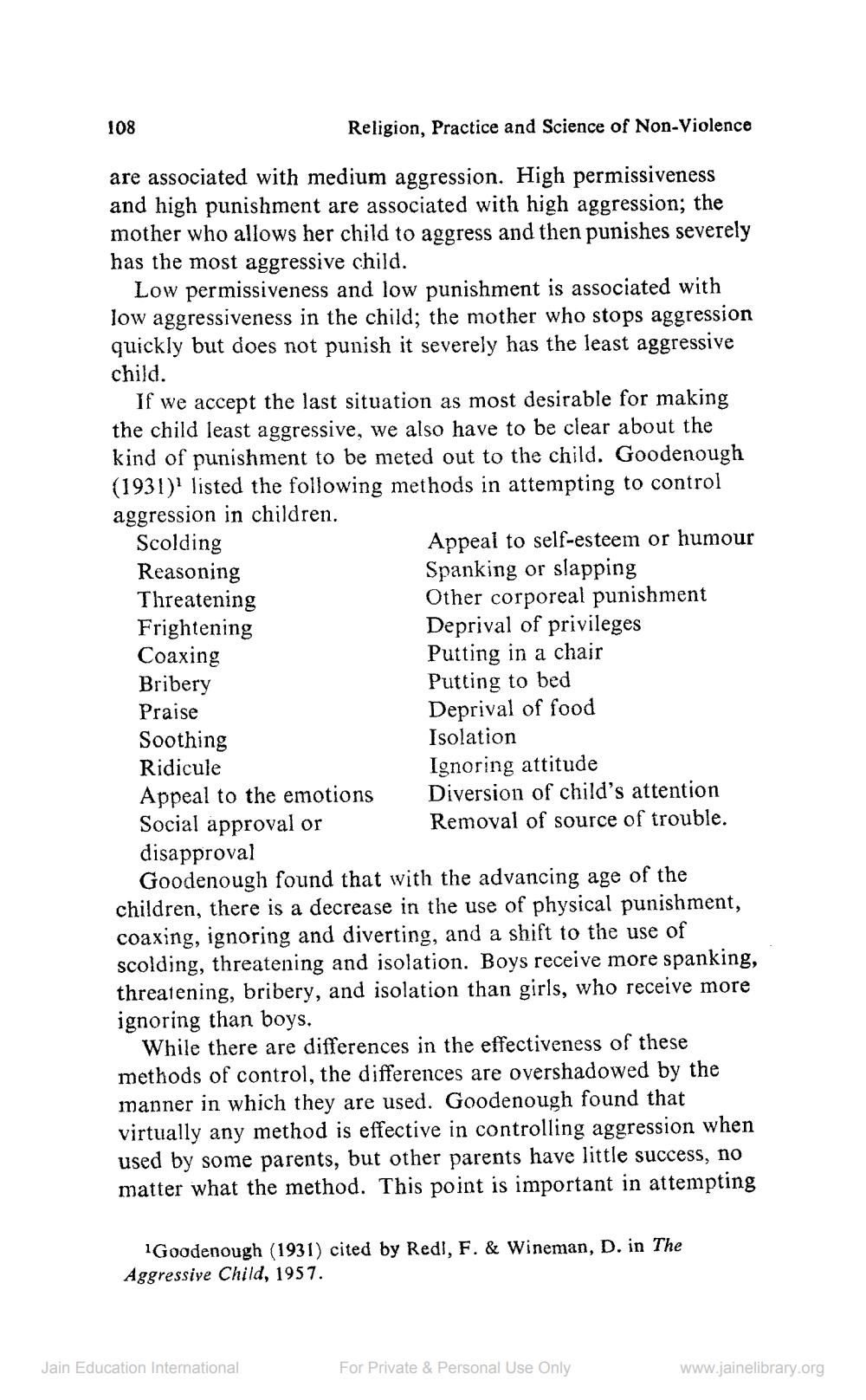________________
108
Religion, Practice and Science of Non-Violence
are associated with medium aggression. High permissiveness and high punishment are associated with high aggression; the mother who allows her child to aggress and then punishes severely has the most aggressive child.
Low permissiveness and low punishment is associated with low aggressiveness in the child; the mother who stops aggression quickly but does not punish it severely has the least aggressive child.
If we accept the last situation as most desirable for making the child least aggressive, we also have to be clear about the kind of punishment to be meted out to the child. Goodenough (1931)' listed the following methods in attempting to control aggression in children. Scolding
Appeal to self-esteem or humour Reasoning
Spanking or slapping Threatening
Other corporeal punishment Frightening
Deprival of privileges Coaxing
Putting in a chair Bribery
Putting to bed Praise
Deprival of food Soothing
Isolation Ridicule
Ignoring attitude Appeal to the emotions Diversion of child's attention Social approval or
Removal of source of trouble. disapproval
Goodenough found that with the advancing age of the children, there is a decrease in the use of physical punishment, coaxing, ignoring and diverting, and a shift to the use of scolding, threatening and isolation. Boys receive more spanking, threatening, bribery, and isolation than girls, who receive more ignoring than boys.
While there are differences in the effectiveness of these methods of control, the differences are overshadowed by the manner in which they are used. Goodenough found that virtually any method is effective in controlling aggression when used by some parents, but other parents have little success, no matter what the method. This point is important in attempting
1Goodenough (1931) cited by Redl, F. & Wineman, D. in The Aggressive Child, 1957.
Jain Education International
For Private & Personal Use Only
www.jainelibrary.org




